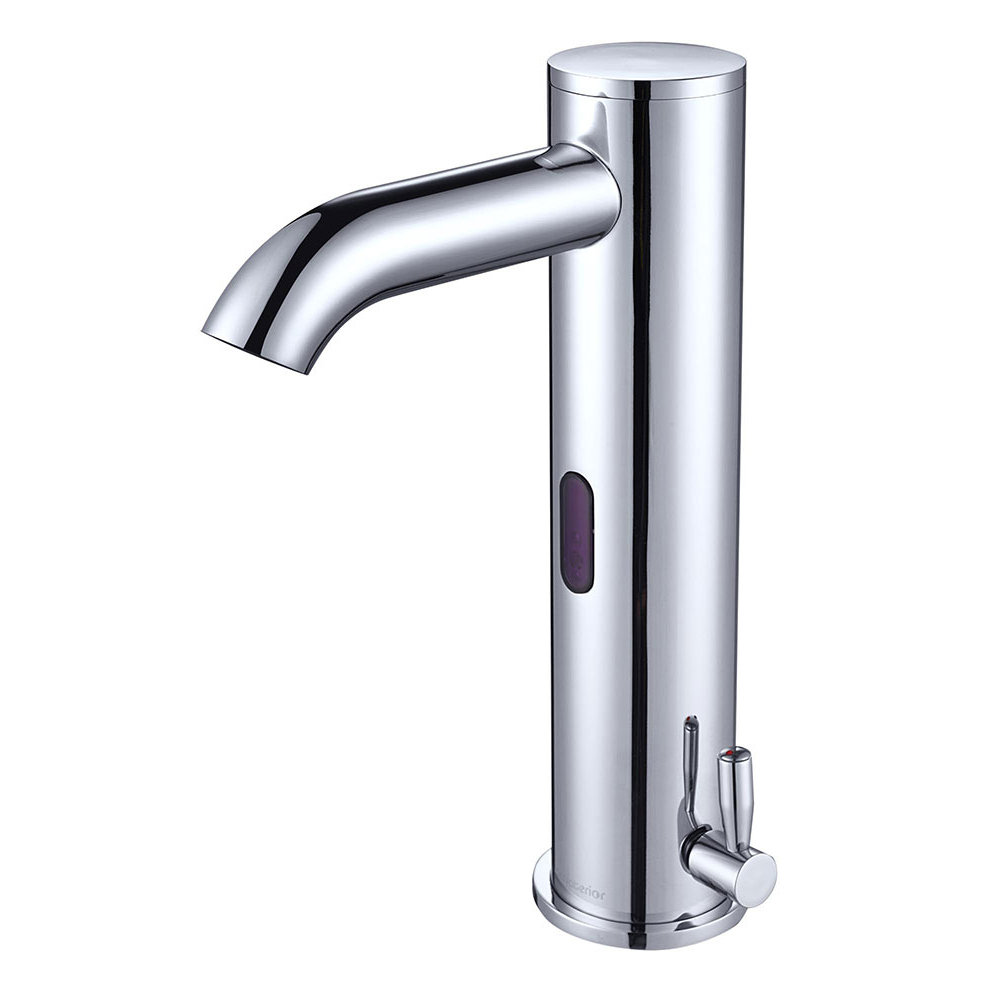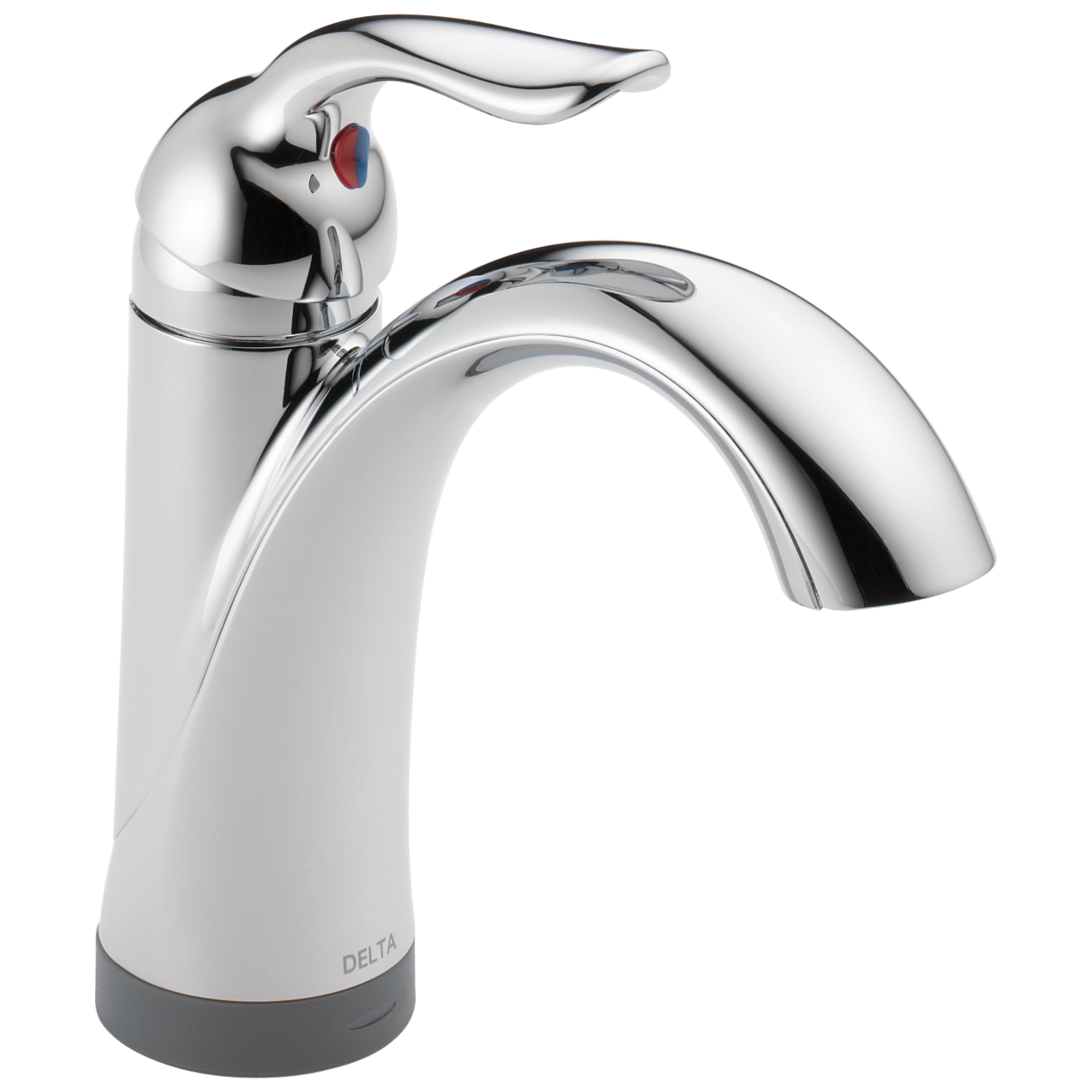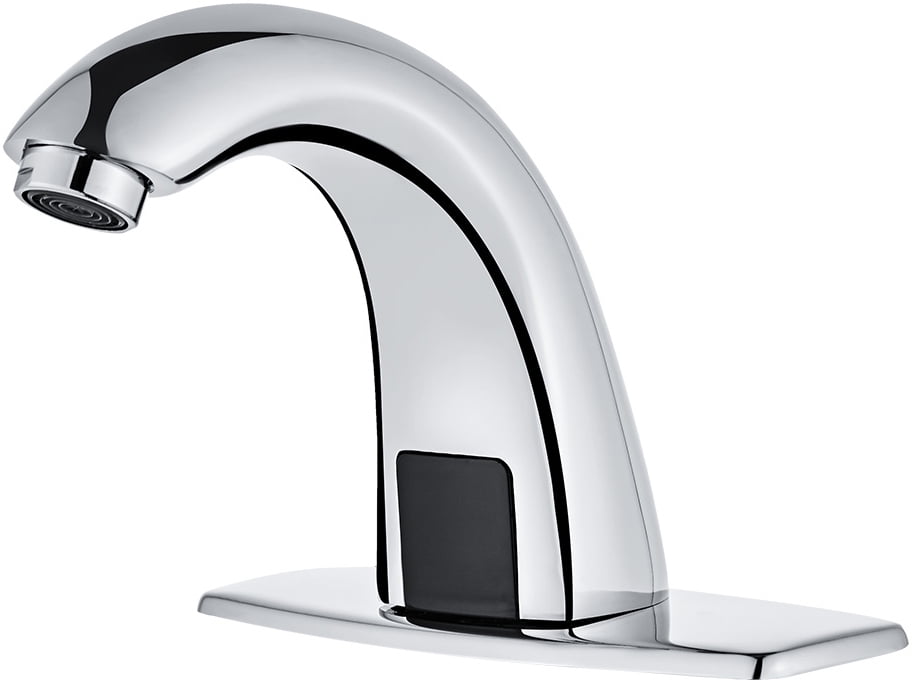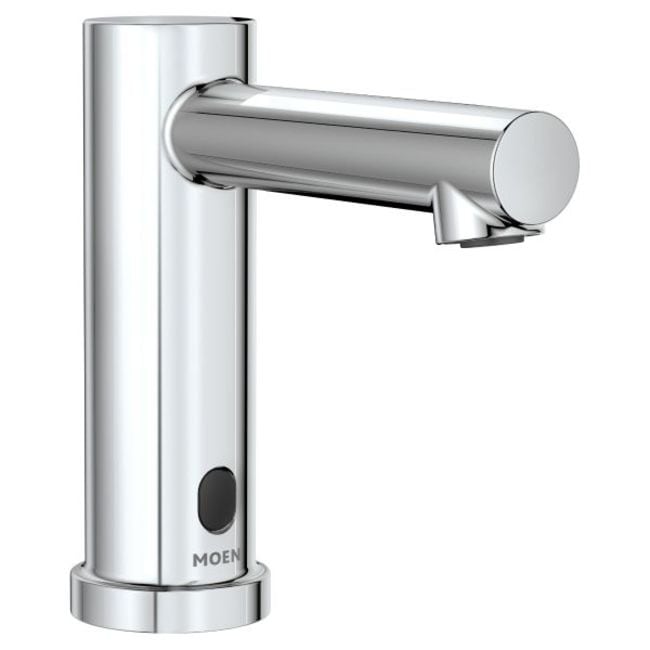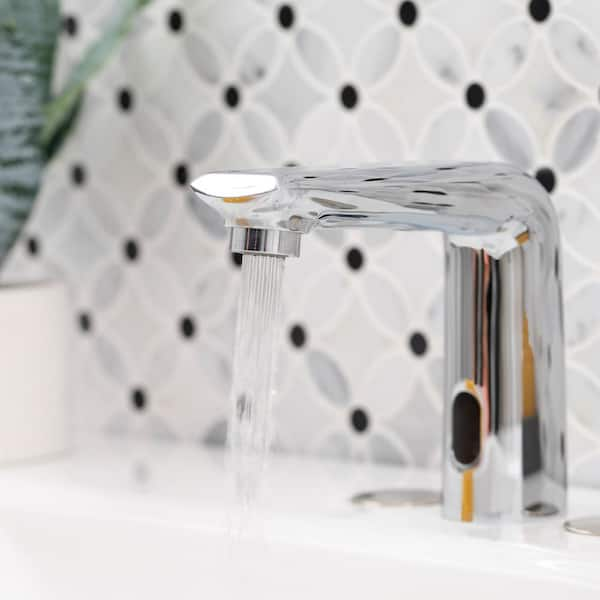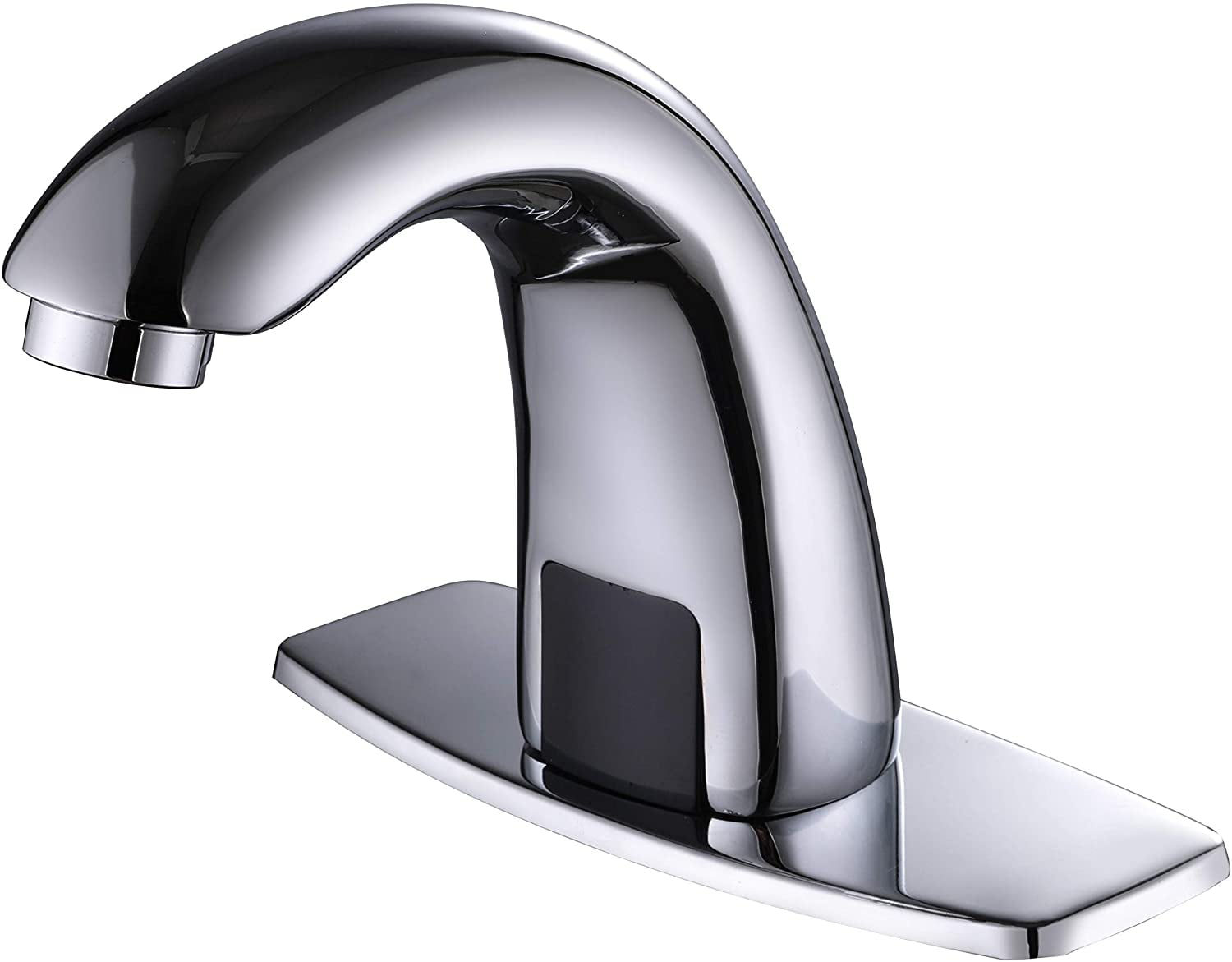The Rise of Touch-Free Technology in Bathrooms
Touch-free technology has rapidly become a staple in modern bathrooms, revolutionizing the way we interact with fixtures such as faucets. The evolution of touch-free technology stems from a growing emphasis on hygiene and convenience in our daily lives. From public restrooms to residential settings, touch-free bathroom faucets have gained widespread popularity for their ability to promote cleanliness and streamline user experience.
- Hygiene Concerns Drive Adoption: The rise of touch-free technology in bathrooms is largely fueled by concerns surrounding hygiene, particularly in high-traffic public areas. Traditional faucet handles can harbor germs and bacteria, leading to cross-contamination and the spread of illnesses. Touch-free faucets eliminate this risk by allowing users to operate the fixture without making direct contact, reducing the transmission of harmful pathogens.
- Convenience and Ease of Use: Beyond hygiene, touch-free faucets offer unparalleled convenience in everyday life. Users no longer need to struggle with turning knobs or handles, especially when their hands are full or dirty. This hands-free operation is particularly beneficial for individuals with mobility issues or disabilities, making the bathroom more accessible to a wider range of people.
- Sustainability and Water Conservation: In addition to hygiene and convenience, touch-free faucets contribute to sustainability efforts by conserving water. These fixtures are equipped with sensors that precisely control water flow, reducing waste by automatically shutting off when not in use. By promoting efficient water usage, touch-free faucets help to lower utility bills and lessen environmental impact.
- Technological Advancements: The rise of touch-free technology in bathrooms reflects broader advancements in sensor technology and automation. Manufacturers continue to innovate, introducing features such as adjustable sensor sensitivity and temperature control to enhance user experience. As these technologies become more affordable and accessible, the adoption of touch-free faucets is expected to increase further.
- Integration in Smart Home Systems: Touch-free faucets are increasingly being integrated into smart home systems, allowing users to control them remotely via smartphones or voice commands. This seamless integration enhances the overall functionality of the bathroom while adding a layer of convenience and customization. As smart home technology continues to evolve, touch-free fixtures are poised to become an integral part of the connected home ecosystem.

Advantages of Touch-Free Bathroom Faucets
Touch-free bathroom faucets offer a myriad of advantages, ranging from improved hygiene to enhanced convenience. These fixtures have transformed the way we interact with water in the bathroom, providing a cleaner and more user-friendly experience for individuals of all ages and abilities.
Enhanced Hygiene: One of the primary advantages of touch-free bathroom faucets is their ability to promote better hygiene. Traditional faucets require users to touch handles or knobs, which can harbor harmful bacteria and germs. Touch-free faucets eliminate this contact, reducing the risk of cross-contamination and helping to maintain a cleaner environment in both public restrooms and private residences.
Reduced Water Waste: Touch-free faucets are equipped with sensors that detect motion and activate water flow accordingly. This technology helps to conserve water by preventing unnecessary usage, such as leaving the faucet running while performing other tasks. By automatically shutting off after a set period of inactivity, touch-free faucets contribute to water conservation efforts and lower utility costs.
Convenient Operation: Another advantage of touch-free bathroom faucets is their convenient operation. Users can activate the faucet with a simple wave of the hand, eliminating the need to touch potentially dirty surfaces. This hands-free operation is particularly beneficial when hands are soapy or full, allowing for a more seamless and efficient washing experience.
Accessibility for All: Touch-free faucets promote accessibility in the bathroom by catering to individuals with limited mobility or dexterity issues. Traditional faucets with knobs or handles can be challenging to operate for those with disabilities or age-related impairments. Touch-free fixtures eliminate this barrier by offering a simple and intuitive interface that is easy for everyone to use.
Modern Aesthetics: In addition to their functional benefits, touch-free bathroom faucets add a touch of modernity to any space. These sleek and stylish fixtures are available in a variety of designs and finishes to complement different bathroom aesthetics. Whether in a commercial setting or residential home, touch-free faucets lend a contemporary flair while providing practical advantages.
Long-Term Cost Savings: While touch-free faucets may require a higher initial investment compared to traditional fixtures, they often result in long-term cost savings. By reducing water waste and minimizing the spread of germs, these fixtures help to lower utility bills and maintenance expenses over time. Additionally, the durability and reliability of touch-free technology can lead to fewer repairs and replacements, further enhancing their value proposition.
How Touch-Free Faucets Work
Touch-free faucets rely on innovative sensor technology to detect motion and activate water flow without the need for physical contact. Understanding how these sensors work can provide insight into the seamless operation of touch-free faucets and their benefits in promoting hygiene and convenience.
Infrared Sensors: The most common type of sensor used in touch-free faucets is infrared (IR) technology. These sensors emit infrared light beams that bounce off objects within their field of detection. When a user’s hands or other objects disrupt the infrared beams, the sensor interprets this interruption as motion and triggers the faucet to turn on the water flow. Once the motion ceases, the faucet automatically shuts off to conserve water.
Capacitive Sensors: Capacitive sensors are another type of technology used in touch-free faucets. These sensors detect changes in capacitance, which occur when an object with a different electrical charge, such as a person’s hand, approaches the sensor. When capacitance is detected, the faucet activates the water flow, providing a hands-free washing experience. Capacitive sensors are known for their sensitivity and responsiveness, making them ideal for touch-free applications.
Ultrasonic Sensors: Ultrasonic sensors utilize sound waves to detect motion and activate the faucet. These sensors emit ultrasonic pulses that bounce off nearby objects. By analyzing the time it takes for the sound waves to return to the sensor, the faucet can determine the presence of a user’s hand and initiate water flow accordingly. Ultrasonic sensors offer high precision and accuracy, making them suitable for environments where reliability is paramount.
Hybrid Sensor Systems: Some touch-free faucets feature hybrid sensor systems that combine multiple sensor technologies for enhanced performance. By integrating infrared, capacitive, and ultrasonic sensors, these hybrid systems can overcome limitations associated with individual sensor types, such as false activations or interference from ambient light. The result is a more robust and reliable touch-free faucet experience.
Power Sources: Touch-free faucets typically require a power source to operate the sensor technology and control the water flow. Most models are powered by either batteries or hardwired electrical connections. Battery-powered faucets offer flexibility in installation and can be easily retrofit into existing plumbing systems without the need for additional wiring. Hardwired faucets, on the other hand, eliminate the need for battery replacement but require access to an electrical outlet.
Maintenance and Calibration: To ensure optimal performance, touch-free faucets may require periodic maintenance and calibration. This may involve cleaning the sensor lens to remove dirt or debris that could interfere with sensor detection. Additionally, calibration may be necessary to adjust sensor sensitivity or fine-tune water flow settings. Regular maintenance helps to prolong the lifespan of the faucet and ensure reliable operation over time.
Design and Installation Considerations for Touch-Free Faucets
Design and installation considerations play a crucial role in the successful integration of touch-free faucets into bathrooms. From selecting the right faucet style to ensuring proper placement and compatibility with existing plumbing systems, careful attention to these factors can optimize the performance and aesthetics of touch-free fixtures.
Faucet Style and Finish: When choosing a touch-free faucet, consider the overall design aesthetic of the bathroom and select a style and finish that complements the existing decor. Touch-free faucets are available in a variety of designs, including contemporary, traditional, and transitional styles, allowing for seamless integration into any bathroom setting. Popular finishes such as chrome, brushed nickel, and matte black offer versatility and durability, enhancing the visual appeal of the space.
Sink Configuration and Placement: The configuration and placement of the sink play a crucial role in determining the suitability of a touch-free faucet. Ensure that the faucet’s spout reach and height are compatible with the dimensions of the sink basin to prevent splashing and ensure adequate clearance for handwashing. Additionally, consider the location of the faucet sensor to maximize convenience and accessibility for users while minimizing the risk of false activations.
Compatibility with Plumbing Systems: Before purchasing a touch-free faucet, verify its compatibility with the existing plumbing system in your bathroom. Check the faucet’s specifications to ensure that it is compatible with standard water supply connections and pressure levels. If retrofitting an existing sink, consider any modifications or adapters that may be required to accommodate the new faucet. Consulting with a plumber can help ensure a smooth installation process and prevent potential compatibility issues.
Power Source and Wiring Requirements: Touch-free faucets require a power source to operate the sensor technology and control the water flow. Determine whether the faucet will be powered by batteries or hardwired electrical connections based on your preferences and the availability of power sources near the installation site. If opting for a battery-powered faucet, consider the frequency of battery replacement and choose a model with long-lasting battery life to minimize maintenance requirements.
Ease of Installation and Maintenance: Choose a touch-free faucet that is designed for easy installation and maintenance to streamline the process and minimize downtime. Look for features such as tool-free installation mechanisms, flexible supply lines, and straightforward sensor calibration procedures. Additionally, consider accessibility to internal components for troubleshooting and repair purposes, as well as the availability of replacement parts and warranty coverage.
Regulatory Compliance and Certification: Ensure that the touch-free faucet complies with relevant industry standards and regulations for safety, performance, and water efficiency. Look for certifications from reputable organizations such as the American Society of Mechanical Engineers (ASME), the National Sanitation Foundation (NSF), and the Environmental Protection Agency’s WaterSense program. Compliance with these standards helps to ensure the quality and reliability of the faucet while promoting water conservation and environmental sustainability.
User Experience and Feedback: Consider the user experience and feedback when selecting a touch-free faucet for your bathroom. Read reviews from other users to gauge the performance, reliability, and overall satisfaction with different faucet models and brands. Pay attention to factors such as sensor responsiveness, water flow consistency, and durability to make an informed decision that meets your needs and preferences.
Cost and Value: Finally, consider the cost and value proposition of the touch-free faucet in relation to its features, performance, and long-term benefits. While touch-free faucets may have a higher upfront cost compared to traditional fixtures, they offer numerous advantages in terms of hygiene, convenience, and water conservation. Evaluate the return on investment (ROI) based on factors such as water savings, maintenance savings, and improved user experience to justify the investment in a touch-free faucet for your bathroom.
Maintenance and Battery Life of Touch-Free Faucets
Touch-free faucets offer numerous benefits in terms of hygiene, convenience, and water conservation, but concerns about maintenance and battery life may deter some users from adopting this technology. Addressing these concerns and implementing best practices can help optimize the performance and longevity of touch-free faucets in bathrooms.
Routine Maintenance: Like any other plumbing fixture, touch-free faucets require routine maintenance to ensure optimal performance and longevity. Regular cleaning of the sensor lens and surrounding surfaces can help prevent dirt, grime, and mineral buildup that could interfere with sensor detection and water flow. Use mild soap and water or a non-abrasive cleaner to gently wipe down the faucet and remove any debris.
Battery Replacement: Battery-powered touch-free faucets rely on batteries to power the sensor technology and control the water flow. Depending on the frequency of use and the type of batteries used, battery replacement may be necessary every six months to two years. Keep track of battery life and replace batteries as needed to prevent interruptions in faucet operation. Consider using high-quality alkaline batteries or rechargeable batteries for longer-lasting performance.
Battery Life Optimization: To optimize battery life and minimize the frequency of battery replacement, consider implementing energy-saving measures and best practices. Adjust the sensor sensitivity settings to reduce unnecessary activations and conserve battery power. Additionally, choose a touch-free faucet with advanced energy-saving features such as automatic shutoff timers and low-power standby modes. These features help extend battery life while maintaining reliable faucet operation.
Hardwired Options: For users concerned about battery maintenance and replacement, consider opting for a hardwired touch-free faucet that connects directly to an electrical outlet. Hardwired faucets eliminate the need for batteries altogether, providing continuous power to the sensor technology and ensuring uninterrupted faucet operation. While hardwired installation may require professional assistance and additional wiring, it offers long-term reliability and convenience for users.
Manufacturer Recommendations: Follow the manufacturer’s recommendations and guidelines for maintenance and battery replacement to ensure optimal performance and warranty coverage. Consult the faucet’s user manual or contact the manufacturer directly for specific instructions on cleaning, calibration, and battery replacement procedures. Adhering to these recommendations helps prevent damage to the faucet and ensures compliance with warranty terms and conditions.
Professional Assistance: If you encounter any issues or concerns with your touch-free faucet, seek professional assistance from a licensed plumber or qualified technician. Professional service providers have the expertise and specialized tools required to diagnose and troubleshoot faucet problems effectively. Whether addressing sensor calibration issues, water flow irregularities, or battery-related concerns, professional assistance can help resolve issues quickly and restore faucet functionality.
User Education: Educate users about proper usage and maintenance practices to prolong the lifespan of touch-free faucets and prevent unnecessary repairs. Provide instructions on how to activate the faucet, adjust sensor settings, and clean the sensor lens effectively. Encourage users to report any issues or malfunctions promptly to facilitate timely intervention and resolution. By promoting awareness and accountability among users, you can minimize potential problems and ensure smooth faucet operation.
Warranty Coverage: Check the warranty coverage provided by the manufacturer for your touch-free faucet and familiarize yourself with the terms and conditions. Most touch-free faucets come with a limited warranty that covers defects in materials and workmanship for a specified period. Understand what is covered under the warranty and what is excluded, such as normal wear and tear or damage caused by improper installation or maintenance. Keep records of warranty documentation and proof of purchase for future reference.
Automatic Sensor Vessel Sink Bathroom Faucet
Dual-Powered Automatic Sensor Faucet Hands Touch Free Touchless
Single Handle Bathroom Faucet with Touch2O.xt® Technology
Luxice Automatic Touchless Bathroom Sink Faucet with Hole Cover Plate, AC/DC Powered Sensor Hands Free Bathroom Tap with Control Box and Temperature
Moen M-Power Electronic Single Hole Touch Free Bathroom Faucet – Chrome
MSI 4 in. Centerset Touch Free Sensor Bathroom Faucet without
Charmingwater Automatic Sensor Touchless Bathroom Sink Faucet with Hole Cover Plate, Chrome Vanity Faucets, Hands Free Bathroom Water Tap with Control
Related Posts:
- Delta Ashlyn Bathroom Faucet
- Pfister Bathroom Faucet Replacement Parts
- Long Spout Bathroom Faucet
- Side Handle Bathroom Faucet
- Pfister Breckenridge Bathroom Faucet
- Bathroom Faucets Made In Usa
- Shelf Back Bathroom Faucet
- Black Modern Bathroom Faucet
- American Standard Bathroom Faucet Removal
- Buy Bathroom Faucet




